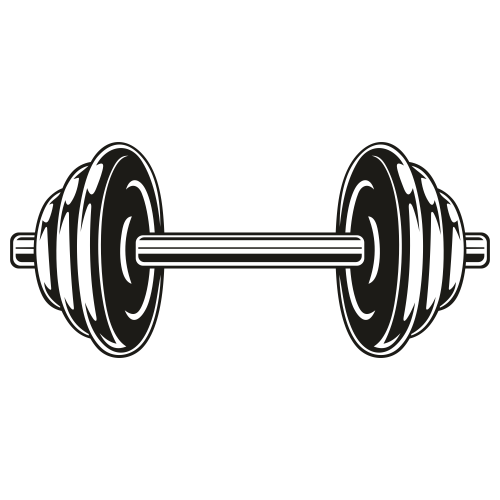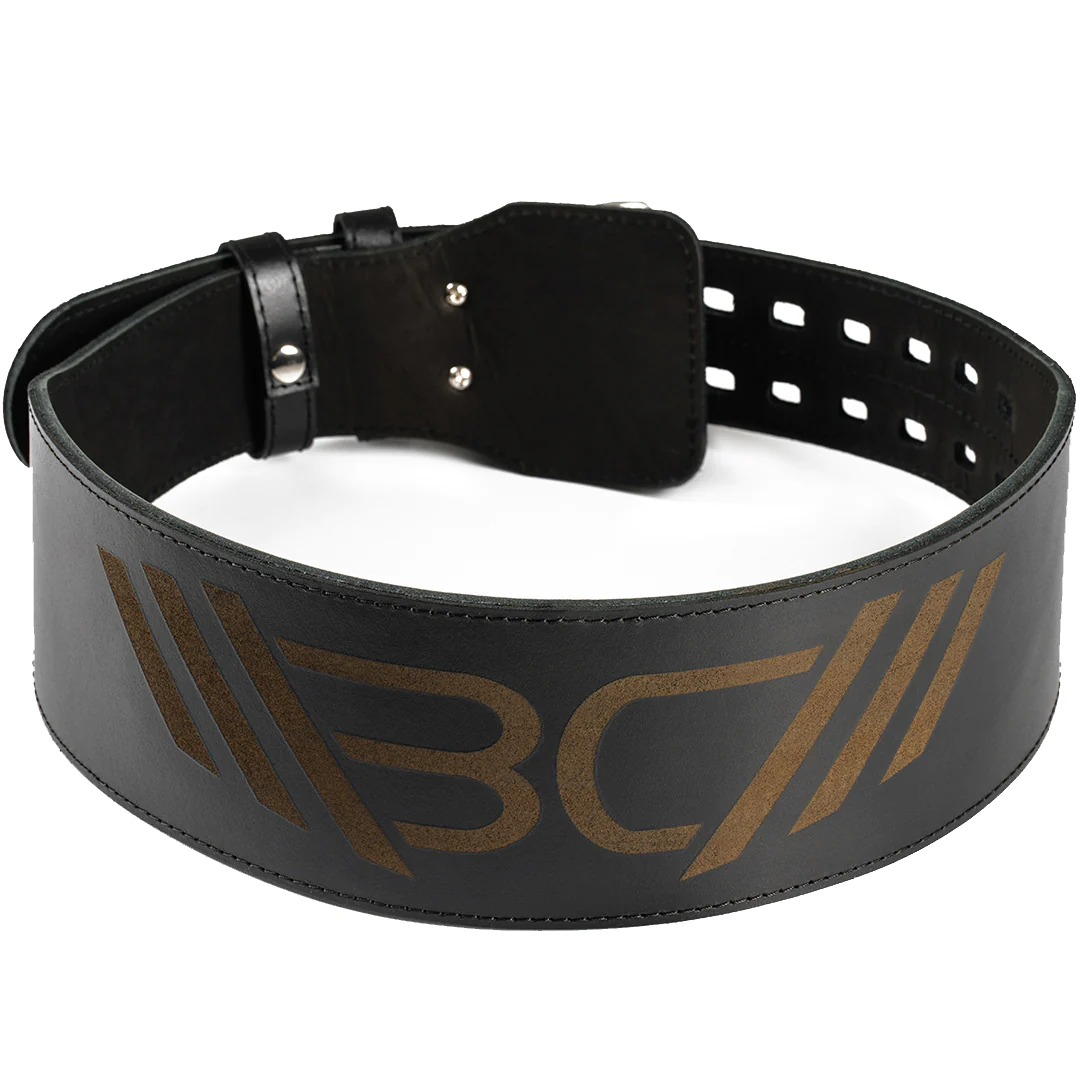Bad Deadlift Form: 8 Common Mistakes and How to Fix Them
Reviewed by Oleksiy Torokhtiy
When done correctly, deadlifts can be a fantastic exercise to include in your workout routine, helping you build strength, muscle, and skill. Bad deadlift form is often the result of simple deadlift mistakes that need to be fixed to limit the risk of injury. Taking the time to perfect your form will lead to safer and more effective lifting.
So, what is bad deadlift form?
Signs of bad deadlift form include a rounded back, the bar colliding with knees, insufficient hip position, not resetting between reps, neck straining, not utilizing legs, torso hyperextension, and a poor bar path. Fixing poor deadlift form means you can lift better, safer, and heavier while minimizing injury risk.
Why Is Correct Deadlift Form Important?
Deadlifts are loved and loathed by many, as they are difficult to perfect but come with numerous benefits, from increased muscle mass and decreased lower back pain to general strength development.
The ability to perform deadlifts correctly can take time, and rectifying common deadlift mistakes is a part of the learning process for weightlifters. Achieving correct deadlift form is vital for minimizing injury, as weak form can lead to injuries in the lumbopelvic area among other areas of the body.
Not correcting initial small mistakes can lead to the development of bad habits, where you repeatedly make the same errors. As a result, you aren’t working the right muscles, which means reducing potential gains. Moreover, performing a poor deadlift hurts lower back, as it becomes strained under tension which can cause pain and injury, and potentially a long recovery time.
Achieving correct deadlift form is important to maintain overall well-being and minimize injury risk. Deadlifts are a great exercise, and with several variations available, you can incorporate them into your workout and see progress and positive results. Deadlifts can be performed both with and without equipment, but introducing simple but effective additions can give your body a little more support and comfort.
For the frequent deadlifter, there’s no better option than a belt and our WBCM leather weightlifting belt is a durable, affordable, and versatile option. Sleek detailing and a range of colors and sizes make this belt suitable for everyone. Constructed from A-grade leather, this weightlifting belt is a strong and supportive addition to any deadlift day.

Enhance your strength training with Warm Body Cold Mind leather weightlifting belt providing exceptional support and durability.
What Is Considered A Good Deadlift Form?
There are a few indications of wrong deadlift form, and being able to identify these issues will help prevent you from making the same mistakes in your sessions. Analyzing your form across all exercises in the gym is a wise move as it’s normal to become comfortable once you get familiar with an exercise.
It’s always best to focus on how you are lifting a weight, instead of getting caught up in how much you’re lifting to achieve good deadlift form.
1. Keeping the Bar Close To the Body
During a deadlift, the bar should follow a consistent straight path from the moment it’s raised from the ground to the second it is touched back down again. Following this path means your body is likely to be in the correct position and the barbell shouldn’t collide with your knees or be too far away from your body that your lower back becomes strained during the movement.


Pro Tip:
If you’re not sure if your deadlift bar path is correct and there aren’t any trainers around to ask, try recording yourself. Place your cell phone at a 45-degree angle which is the ideal position for capturing your lift. Once your phone is positioned, go ahead and record yourself. When you watch the video back, you’ll be able to see how you lift and if the bar follows a straight and consistent line.
2. Feet and Knees Positioned Slightly Outward
“Knees out” is a regular gym cue for various exercises such as squats and deadlifts. Allowing the knees to turn inwards places unnecessary stress on the joints and can lead to injuries. By slightly turning the feet outwards, the knees should follow the path of the toes and remain in the correct position. This is a key giveaway of good vs bad deadlift form and has the power to make a considerable difference in your lift.

3. Lower Back Not Feeling Strained
Feeling general muscle soreness after deadlifting is normal and can be a sign that you’ve worked your muscles hard and they now need to rest and recover. Feeling sharp pain or intense discomfort in the lower back after deadlifts isn’t normal, and can be a huge indicator that you’ve got bad deadlift form.
Keeping the hips in the correct position and not leading the lift with your back, raising and rounding the lower proportion as the lift progresses, are key takeaways to prevent a strained lower back.
The points above are a few examples of good deadlift form, but we’ve also put together a checklist so you can easily run through each step to find out if your deadlift form is good. If you see there’s something wrong with your form, take the time to fix it before proceeding with the lift.
- Take a hip-width stance
- Keep toes and knees pointed slightly out
- Engage the core and maintain a straight back
- Grip the bar securely just outside of the knees
- Keep chest up and neutral forward head position
- Inhale when raising the bar, pushing the feet through the floor
- Maintain a straight bar path
- Pause at the top but avoid hyperextending
- Exhale and return the bar to the ground with control
- Reset and repeat

Subscribe!
Get useful tips, expert insights, and in-depth analysis of training programs & nutrition plans to get the most out of your performance.
8 Common Deadlift Mistakes
Achieving correct deadlift form can take time and effort, but it’s the best way to ensure you’re activating the right muscles, lifting the bar safely, and keeping injury risk as low as possible. Learning how to fix deadlift form mistakes is a gateway to better gym sessions where you can feel confident in your abilities.

❌ Rounded Back
Arguably one of the key signs of wrong deadlift form is a rounded back. This is a common mistake any lifter can make, but a rounded back tends to be seen with beginners who lack experience with deadlifts and maintaining good form throughout the full set.
When the trunk of your body isn’t braced in preparation to lift, it can be easy to let the shoulders fall forward, closing the chest, and leading to a rounded upper back. Lifting with a rounded back is a sign of poor deadlift form and can lead to back pain and potential injury.

Solution: Bend your knees and hips, pushing the latter out as you engage your lats in preparation to lift. Avoid bending through your core or lifting too much weight as these errors can lead to a rounded lower back.
When deadlifting, it’s crucial to maintain a good, solid posture, where your core is engaged, the shoulders are back, the chest is up, and your back remains flat with no rounding of the lower spine. Keeping the back in a neutral position means you are limiting the stress on your spine and using key muscles, such as the lats, glutes, and hamstrings, to push you through the movement.
A reliable self-locking system is one of the key features of our WBCM nylon weightlifting belt which gives lifters the ability to feel increased support and comfort during deadlifts. This belt is lightweight and breathable, keeping lifters comfortable through every lift they want to tackle, and it can be a great reminder to engage the core, especially during deadlifts.

Discover the strength of the Warm Body Cold Mind nylon lifting belt. Lightweight and durable, it provides optimal support for your workouts.
❌ Bar Colliding with Knees
Many of us have injuries in the gym, with the shoulders, lumbar spine, and knees being some of the most common areas to experience issues. Colliding the bar with the knees during a deadlift can be painful and frustrating, but it’s a problem that can be fixed. It is usually a sign that the bar path is off, and once in contact with the knees, it can potentially lead to a loss of focus and a rather unstable lift.
This is one of the most common deadlift mistakes, but some simple adjustments should help stop this problem from happening again.

Solution: Many lifters, particularly those new to deadlifting, adopt an approach where they are beginning in a squatting position with the knees far over the bar. To avoid hitting your knees with the barbell, adopt a half-squat stance, with the feet around hip-width apart. Angle the toes slightly outwards as the knees will follow, creating a clear path for the bar to travel.
❌ Insufficient Hip Position
The hips are an integral part of the deadlift, but when they are too high during deadlifts, they can lead to lower back strain and pain. Adopting the correct hip position is vital for keeping unnecessary pressure off the knees which can be uncomfortable during the lift. An incorrect hip position that’s too high can encourage you to lead the lift with your hips raising first, instead of utilizing your leg muscles to drive the deadlift.
Solution: The deadlift is recognized as a pulling movement, but form can be improved by pushing the ground away with your legs and feet as you lift. This will help engage your hips and keep them aligned during the movement so they don’t shoot up or lead the movement, aiding toward a curved lower back.
Hips should be pushed back, as though you are at the beginning of a sitting position. Adopting this stance should mean your back maintains a straight, neutral position, your core is engaged, and the knees are out of the way of the bar.

❌ Neck Strain
Looking around during the lift or focusing at a point that puts your neck and upper spine in an unnatural position leads to poor head positioning, which can translate to neck strain. Achieving correct form and keeping the head and neck straight is an important part of how to deadlift without back pain or neck pain as adopting a neck position that’s different from the rest of your body can be uncomfortable.

Solution: Allow your head to find a position neutral with the rest of your body. This is usually forward and down, but as you begin to lift the barbell, it’s natural for the head to raise and adopt a more forward position where you are looking straight in front. However tempting it is to look in the mirror, save this for the later stage of the movement when your head will naturally raise as you complete the concentric part of the exercise.
❌ Not Utilizing Legs
Legs are a fundamental part of deadlifts — they provide support, stability, and strength to power through the movement. Not allowing the legs to give strength to the rest of the body when deadlifting can lead to overworking and hurting your back.

Solution: When you begin to lift the barbell off the ground, drive through your legs into your heels, straightening the legs as you raise the bar. Driving with your legs should give you the strength needed to lift the bar and remain stable. The legs need to be in a half-squat or roughly parallel position with the hips not too high or low.

Pro Tip:
It’s often easy for form to slip when the body is tired and you’ve already completed several reps or sets. If you find your form started well and is progressively worsening as your set goes on, it’s a wise idea to lower your weight to something more achievable where you can maintain correct form and still work your body.
❌ Hyperextension
Torsi hyperextending at the top of a deadlift isn’t a wise move for back health, as it puts unnecessary strain on the back, which can lead to injuries. It can usually be observed in lifters jerking at the top of the lift, leaning themselves backward before returning the bar to the ground. This is a key reason why the deadlift hurts lower back, and it isn’t the fault of the exercise but more of a lifter’s mistake.

Solution: There is no need to jerk your back at the top of a deadlift — it can actually do more damage than good for the condition of your back muscles and spine. Instead, when you reach the top point of a deadlift and you’ve raised the bar off the ground with your hips in the correct position and core engaged, simply lower the bar back to the floor in a steady, controlled manner, without bouncing it back up off the ground.
When the bar is particularly heavy, it can be easy to hyperextend at the top without even realizing it and also face struggles with gripping the bar. Overcome your grip limitations with our WBCM weightlifting straps Lasso Pro.
Reinforced dual stitching and durable cotton help form the durable construction of these straps, enabling lifters to utilize them across a wide variety of gym-based training from functional fitness and kettlebells, to weightlifting and powerlifting.

Cotton Lasso Lifting Straps Pro
Enhance your lifting experience with Warm Body Cold Mind lasso lifting straps designed for durability and comfort.
❌ Neglecting Warm Up
Deadlifts are a compound exercise, meaning many different muscles in the body are recruited when completing the exercise. Warming these muscles up before jumping into a set of deadlifts may help minimize injury risk, though more studies need to be completed on this subject.
Getting your muscles engaged is just one part of the importance of warming up before exercising, as it also means you can get your mind focused and make mind-to-muscle connections with the rest of your body, helping avoid any loss of focus when you begin your deadlift set.

Solution: Allow a window of time before you begin your deadlift set to get yourself warmed up using a range of passive and active stretches. Aim to warm up the hips, making sure they are mobile enough to achieve a good starting position and hinge ability. Also take time to warm up your legs, getting key muscles such as the hamstrings and glutes activated so they can be relied upon as a strong and stable foundation for the lift.
❌ Incorrect Grip
There are several grip types for deadlifts including double overhand, mixed, and hook, among other variations. Security and safety in any exercise in the gym are paramount, and incorrect grip can be dangerous and put you at risk of injury. Not having a solid hold on the bar means it could roll out from your hands unexpectedly, and when the bar is loaded with plates, this isn’t very safe.

Solution: Try out the various grip types and once you’ve found the one you’re most comfortable with, aim to get your grip perfect. It’s wise to cycle through the various grip types to keep testing your grip strength and ensure you don’t become accustomed to holding the bar in the same way every time you deadlift. Ensure the bar is secure in your grip before lifting, and that your grip positioning is just outside of your legs.
Conclusion
Bad deadlift form can inhibit progress as well as lead to unnecessary pains, pulls, and general injury. The ability to identify deadlift mistakes in your training will help improve your form so you can lift safer and better for longer, achieving your goals and surpassing expectations without putting your body at risk.
Do you have experience with bad deadlift form? What are some key improvements you’ve made to better your deadlifts? Let us know!
References:
- Christa Sgobba, Cori Ritchey, “11 Mistakes You Make During Deadlifts That Can Lead To Back Pain”, Men’s Health https://www.menshealth.com/fitness/a19540506/deadlifting-and-back-pain/ (accessed March 15, 2024).
- Fábio H Dominski, Thais C Siqueira, Ramires A Tibana, Alexandro Andrade, “Injuries in functional fitness: an updated systematic review”, The Journal of Sports Medicine and Physical Fitness 2022, https://www.researchgate.net/publication/349894745_Injuries_in_functional_fitness_An_updated_systematic_review (accessed March 22, 2024).
- Isabel Martín-Fuentes, José M. Oliva-Lozano, José M. Muyor, “Electromyographic Activity in Deadlift Exercise and Its Variants: A Systematic Review,” National Center For Biotechnology Information, https://www.ncbi.nlm.nih.gov/pmc/articles/PMC7046193/ (accessed March 15, 2024).
- Matthew R. Wenning, “The Deadlift and Its Application to Overall Performance,” National Strength and Conditioning Association, https://www.nsca.com/education/articles/tsac-report/the-deadlift-and-its-application-to-overall-performance/ (accessed March 15, 2024).
- Nihat D. Demirkıran, Ali İhsan Kılıç, Ogün Köyağasıoğlu, Engin Denizhan Demirkıran, “Incidence and Risk Factors of Sports Injuries Among National Competitive Deadlifters,” Cyprus Journal of Medical Science, https://cms.cyprusjmedsci.com/Uploads/Article_49932/cjms-6-44-En.pdf (accessed March 15, 2024).
- A J Fradkin, B J Gabbe, P A Cameron, “Does warming up prevent injury in sport? The evidence from randomised controlled trials?”, National Center For Biotechnology Information, https://pubmed.ncbi.nlm.nih.gov/16679062/ (accessed March 22, 2024).
- All photos are made by WBCM Media team.
Author: Ihor Shymechko
Coach, PRO Olympic Weightlifter
Ihor Shymechko is a renowned Ukrainian weightlifter. He has represented his country in several Olympic Games, notably in 2008, 2012, and 2016. His impressive career includes winning the European championship in 2009 and earning a silver medal in 2011 in the +105 kg division. Shymechko also earned a Ph.D. from Lviv State University of Physical Culture.
Reviewed by: Oleksiy Torokhtiy
Olympic Weightlifting Champion
Oleksiy Torokhtiy is an Olympic gold medalist in weightlifting and a prominent coach. Born in Ukraine, he has degrees in Physical Education and Engineering and is currently pursuing a Ph.D. in Sports Science. He’s known for his online training programs and masterclasses that have helped many athletes around the world. He is also a successful social media influencer and the founder of the international sportswear brand “Warm Body Cold Mind”.












